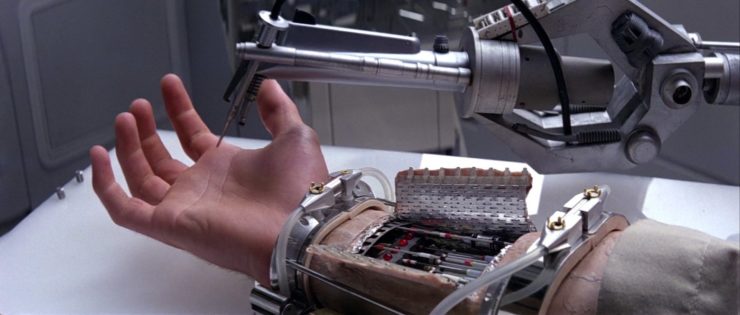A prosthetic arm named after Luke Skywalker’s robotic hand in The Empire Strikes Back is better than ever, thanks to a team of researchers, NPR reported earlier this week.
According to NPR, the University of Utah-based team (with collaborators from the University of Chicago and the Cleveland Clinic) adapted the commercially available “LUKE arm” so that it can now mimic human touch and “feel,” instead of just performing movements.
Here’s how they did it: They implanted electrodes into the nerves in the forearm of their 14-month-study’s volunteer, a real estate agent named Keven Walgamott who’d lost his left hand along with part of his arm. When Walgamott thought about touching something with his hand, the new-and-improved LUKE arm would obey his brain signals, NPR reported. The researchers would send stimuli through the electrodes in his arm, and then his brain would interpret them as coming from the hand. (Think the scene at the end of The Empire Strikes Back where Luke gets the touch-reflexes tested in his new prosthesis.)
NPR reported that although feeling with the prosthetic was different from feeling with Walgamott’s right hand, he could still differentiate between big/small and soft/hard objects.
“Being able to pick up an egg without crushing it was a remarkable experience,” he told NPR, who reported that he also used the prosthetic to feed himself, put a pillow into a pillowcase, and slip on a wedding ring in the lab. The phantom pain he was feeling also lessened while he used the arm, although it came back when he took it off.
It’s going to be a while before this arm is available, though. There are still technical challenges the researchers have to work through, NPR reported, like making a wireless version with a pacemaker-like device implanted in the body, so users don’t have to use it under supervision or have it be surgically wired into their arm.
Right now, the version they’re testing out has “electronic controls [that] can be strapped to the waist.”
Read more about the study at NPR.










